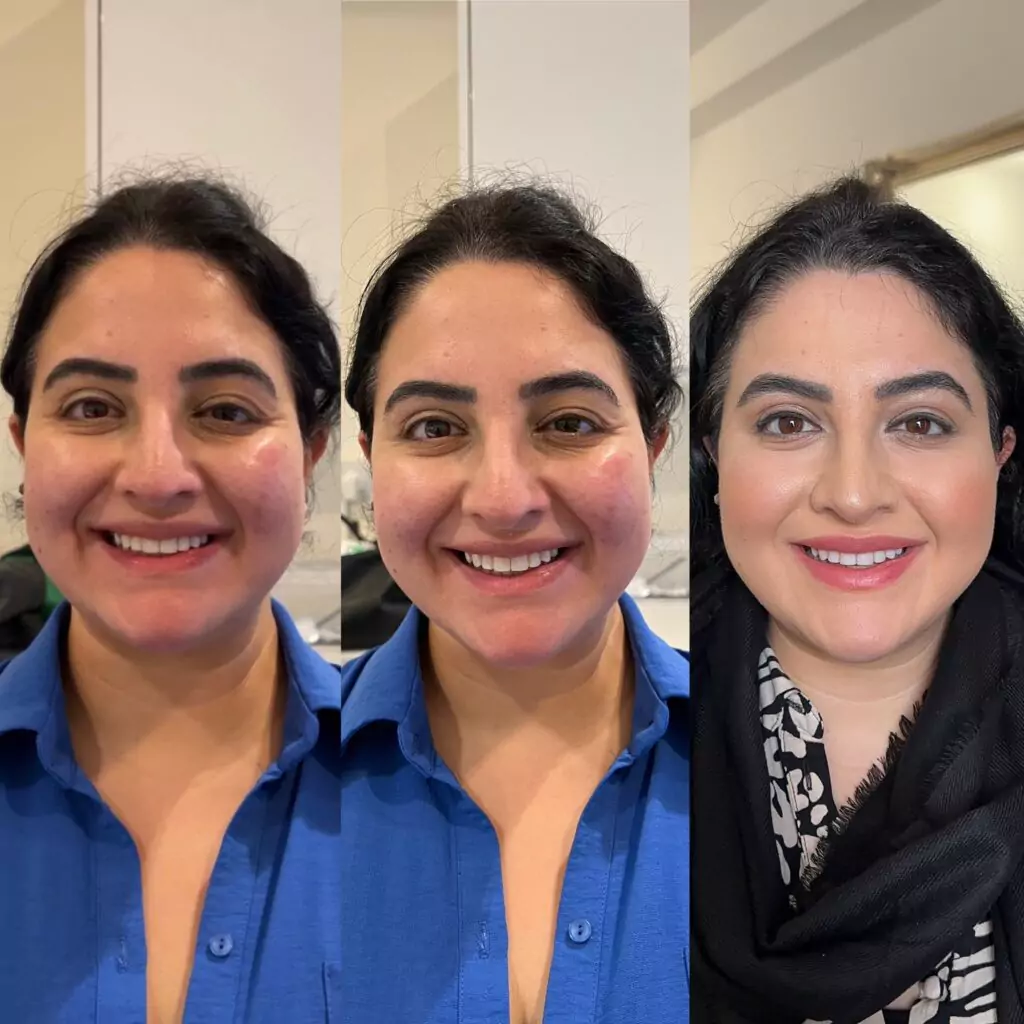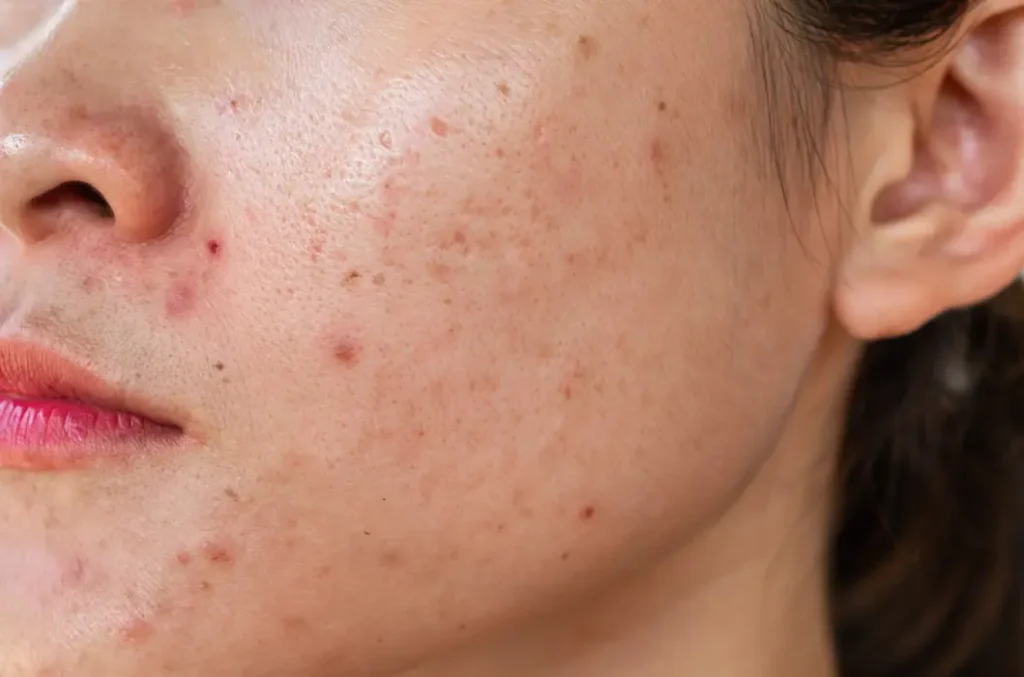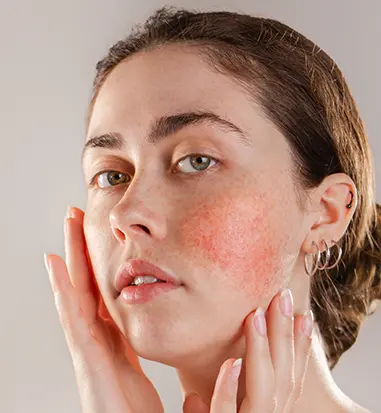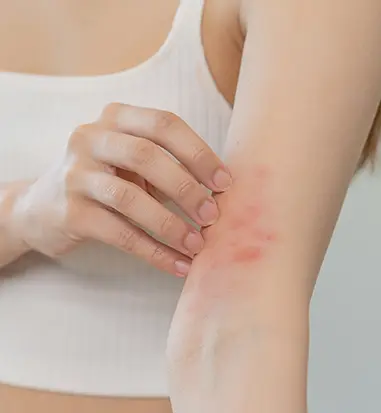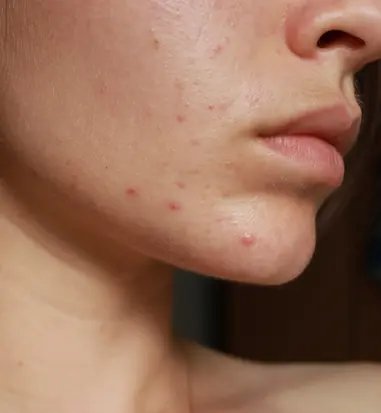Whether it’s patches, spots, or scars — if the colour won’t fade, we find out why.
Nothing Seems to Work — Or It Makes It Worse
You’ve tried brightening creams. Peels. Facials.
Maybe you were told it was sun damage. Or acne marks. Or hormones.
But whatever you’ve tried — it either didn’t work, or made things worse.
We see this every day.
Because pigmentation isn’t just a colour issue.
It’s your skin’s response to stress, trauma, and inflammation — past or present.
And until someone treats why it’s happening, it keeps coming back.
Why Most Pigment Treatments Fail
Dark marks, patches, and uneven tone don’t respond well to aggressive treatments — especially in skin of colour.
That’s because pigment is your skin’s way of protecting itself.
The more you push it, the more it pushes back.
We’ve seen patients made worse by:
- Peels that were too strong
- Laser treatments done too soon
- Over-the-counter “lightening” products
- The wrong facials or active ingredients
At Harmony, we don’t just treat what we see — we diagnose what’s underneath it.
What We Treat at Harmony
We work with patients struggling with:
- Dark marks after breakouts (post-inflammatory hyperpigmentation)
- Hormonal pigment (melasma, often on the cheeks, forehead or upper lip)
- Sun-induced discolouration from long-term exposure
- Uneven tone that gets worse after inflammation or irritation
- Pigment overload in skin of colour after years of sensitivity or mistreatment
Pigment Needs Diagnosis — Not Just Treatment
Before we touch pigment, we ask one thing:
Is your skin ready to let it go?
That means checking:
- Is your barrier strong enough to tolerate treatment?
- Is the pigment deep or surface-level?
- Is there inflammation or trauma memory underneath?
We use:
- Vectra 3D and Sylton scans to map pigment depth, hydration, and blood flow
- Full skin history to track what triggered the change
- Real-time imaging to monitor safe, steady progress
The Harmony 3-Phase Pigment Protocol
Pigmentation doesn’t need to be attacked.
It needs to be released — and we do that in the right order.
1. Calm & Repair the Skin First
This phase may include:
- Electroporation with anti-inflammatory ingredients
- Exosome therapy
- LED for skin healing and repair
- A simplified, pigment-safe skincare routine
2. Gently Guide Pigment Release
This may include:
- Enzyme-based brightening
- Pigment modulators (topical or internal)
- Low-heat treatments (if suitable)
- Lifestyle and hormonal support where needed
3. Keep It from Coming Back
We support long-term clarity through:
- UV and heat protection planning
- Hormonal mapping (if relevant)
- Gentle resurfacing (only when skin is ready)
- Ongoing support for barrier health
1. Calm & Repair the Skin First
We restore the barrier and reduce inflammation so your skin can safely respond.
This phase may include:
- Electroporation with anti-inflammatory ingredients
- Exosome therapy
- LED for skin healing and repair
- A simplified, pigment-safe skincare routine
2. Gently Guide Pigment Release
- Enzyme-based brightening
- Pigment modulators (topical or internal)
- Low-heat treatments (if suitable)
- Lifestyle and hormonal support where needed
3. Keep It from Coming Back
Pigment often returns when the root cause is ignored.
We support long-term clarity through:
- UV and heat protection planning
- Hormonal mapping (if relevant)
- Gentle resurfacing (only when skin is ready)
- Ongoing support for barrier health
Real Patient Progress
We Don’t Just Fade Pigment — We Stop It From Repeating
Disclaimer:
All pigment plans are customised. These results reflect diagnostic-based, carefully paced treatment
Real Patient Review
Not All Dark Marks Should Be Treated the Same Way
Your skin isn’t broken.
It’s protecting you — and pigment is how it does that.
At Harmony, we don’t fight it.
We work with it — and build trust between your skin and your treatment again.
The result?
Fewer relapses. Better healing. Skin that holds its clarity over time.
Your First Step
Book a Diagnostic Consultation
Every pigment case starts with a full skin analysis and consultation.
We’ll assess:
- Pigment depth + distribution
- Skin sensitivity + inflammation
- Treatment history and past flare-ups
- Whether your skin is ready for correction now — or needs to stabilise first
